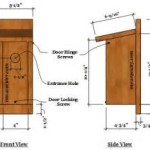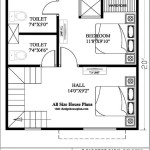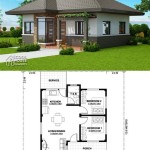Exploring The Benefits Of Open Plan House Designs
Open plan house designs have gained immense popularity in contemporary architecture, transforming the way individuals perceive and interact within their living spaces. This design philosophy, characterized by the minimization of interior walls and the integration of multiple functional areas into a single, expansive space, presents a compelling alternative to traditional, compartmentalized layouts. The appeal of open plan living extends beyond mere aesthetics, encompassing a range of practical and lifestyle advantages that cater to the evolving needs of modern households.
The fundamental principle of open plan design involves the removal of visual and physical barriers that traditionally separate spaces like the kitchen, living room, and dining area. This amalgamation creates a unified zone that fosters a sense of spaciousness and connectivity. The resulting environment encourages interaction and flexibility, adapting seamlessly to various activities and social gatherings. Understanding the nuances of open plan design requires a thorough examination of its key benefits and potential drawbacks, allowing homeowners to make informed decisions about their living spaces.
Enhanced Natural Light and Ventilation
One of the most significant benefits of open plan house designs is the optimization of natural light and ventilation. Without the obstruction of interior walls, sunlight can penetrate deeper into the home, illuminating previously shadowed areas. This influx of natural light not only enhances the aesthetic appeal of the space but also contributes to a more cheerful and energizing atmosphere. Reduced reliance on artificial lighting during daylight hours can lead to lower energy consumption and cost savings.
Furthermore, open plan layouts facilitate improved airflow throughout the house. Natural ventilation is enhanced as air can circulate freely between different areas. This is particularly beneficial in climates where natural ventilation can reduce the need for air conditioning, further contributing to energy efficiency. Proper placement of windows and doors in an open plan design can maximize cross-ventilation, creating a comfortable and healthy indoor environment. Strategic landscaping can also play a role in directing airflow and providing shade, complementing the open plan design's ventilation benefits.
However, it is important to consider the potential challenges related to temperature control in an open plan space. While enhanced ventilation is generally advantageous, it can also make it more difficult to maintain consistent temperatures in all areas of the house. This is especially true in climates with significant temperature fluctuations. Implementing strategies like zoned heating and cooling systems, strategically placed ceiling fans, and appropriate window coverings can help mitigate this issue and ensure optimal comfort throughout the year.
Increased Social Interaction and Family Connectivity
Open plan designs are conducive to increased social interaction and family connectivity. By removing the barriers that traditionally separate living areas, these designs encourage more frequent and spontaneous interaction among household members. Parents can supervise children playing in the living room while preparing meals in the kitchen, fostering a sense of togetherness and involvement. This seamless integration of spaces also makes it easier to host social gatherings, as guests can move freely between different areas without feeling segregated.
The open flow of communication in an open plan home can strengthen family bonds and create a more harmonious living environment. Conversation is no longer restricted by walls, and individuals are more likely to engage in casual interactions throughout the day. This can be particularly beneficial for families with young children, as it allows parents to monitor their activities and provide guidance without being physically confined to a single room. Furthermore, open plan designs can facilitate shared activities, such as watching movies together, playing games, or working on projects as a family.
Despite these benefits, it is important to address the potential for increased noise levels in an open plan environment. The absence of walls can lead to sound traveling more freely throughout the house, which may be disruptive at times. Implementing sound-absorbing materials, such as carpets, rugs, and upholstered furniture, can help mitigate this issue. Strategic placement of furniture can also create natural sound barriers, and the use of area rugs can help absorb sound. Furthermore, designating specific areas for quiet activities, such as reading or studying, can provide a respite from the noise and maintain a balanced living environment.
Enhanced Flexibility and Adaptability
Open plan house designs offer enhanced flexibility and adaptability, catering to the ever-changing needs of modern households. The absence of fixed walls allows for easy reconfiguration of the space to accommodate different activities and lifestyles. Furniture can be rearranged to create distinct zones for dining, lounging, or working, without the need for extensive renovations or construction. This flexibility is particularly valuable for families with growing children or individuals who frequently entertain guests.
Furthermore, open plan designs can be easily adapted to accommodate changing needs over time. As families grow and their lifestyles evolve, the space can be reconfigured to suit their specific requirements. For example, a former dining area can be transformed into a playroom or home office, without the need for major structural modifications. This adaptability ensures that the home remains functional and relevant for years to come, maximizing its long-term value and utility.
While open plan designs offer significant flexibility, it is essential to consider the potential challenges related to defining distinct zones within the space. The absence of walls can sometimes make it difficult to create a sense of separation and privacy between different areas. Employing visual cues, such as changes in flooring, area rugs, and furniture placement, can help define distinct zones without compromising the open flow of the space. Utilizing screens, partitions, or strategically placed shelving units can also create subtle divisions while maintaining a sense of openness and connectivity.
Another potential challenge is the need for careful planning and organization to maintain a clutter-free and aesthetically pleasing environment. In an open plan space, clutter can quickly become overwhelming, as there are no physical barriers to contain it. Implementing storage solutions, such as built-in cabinets, shelves, and drawers, is crucial for keeping the space organized and tidy. A minimalist approach to decor and furniture can also help create a more streamlined and functional living environment.
Implementing open plan designs necessitates a careful evaluation of the existing architectural structure. Load-bearing walls cannot be removed without proper structural support, and any modifications to the building's framework must comply with local building codes and regulations. Consulting with a qualified architect or structural engineer is essential to ensure that the open plan design is structurally sound and meets all safety requirements. This initial assessment can help identify potential challenges and ensure that the renovation is carried out safely and effectively.
The selection of appropriate flooring materials is also crucial in an open plan design. Different flooring types can be used to delineate distinct zones within the space, adding visual interest and helping to define the function of each area. For example, hardwood flooring might be used in the living and dining areas, while tile or stone flooring could be used in the kitchen and entryway. The choice of flooring materials should also consider factors such as durability, ease of maintenance, and acoustic properties, ensuring that the flooring meets the needs of the occupants and complements the overall design aesthetic.
The integration of smart home technology can further enhance the functionality and convenience of an open plan design. Smart lighting systems can be programmed to adjust automatically based on the time of day or activity, creating different moods and atmospheres. Smart thermostats can be used to control the temperature in different zones of the house, optimizing energy efficiency and maintaining a comfortable environment. Smart home security systems can provide added peace of mind, enhancing the safety and security of the open plan living space.
Careful consideration of the interior design elements is also essential for creating a cohesive and harmonious open plan living space. The color palette should be carefully chosen to create a sense of unity and flow throughout the different areas. The furniture should be scaled appropriately for the size of the space and arranged in a way that promotes conversation and interaction. The use of artwork, accessories, and plants can add personality and visual interest to the space, creating a welcoming and inviting atmosphere.
Ultimately, the success of an open plan house design depends on careful planning, thoughtful execution, and a clear understanding of the occupants' needs and preferences. By carefully considering the benefits and challenges of this design approach, homeowners can create a living space that is both functional and aesthetically pleasing, enhancing their quality of life and creating a more connected and harmonious living environment.

Explore 3 Benefits Of Open Concept Floorplans Perry Homes

Explore The Many Benefits Of An Open Floor Plan Layout Britton Homes

Exploring The Advantages Of Open Floor Plans

Exploring The Pros And Cons Of Open Floor Plans Passage Island Construction

Open Concept Unveiling The Benefits Of A Spacious And Connected Home Chas Crazy Creations

Open Concept Interior Design Pros Cons And How To Pull It Off Hipcouch Complete Interiors Furniture

Bring Kitchen Living Room Design Ideas To Life

Bring Kitchen Living Room Design Ideas To Life

Free Editable Open Floor Plans Edrawmax

Free Editable Open Floor Plans Edrawmax
Related Posts








